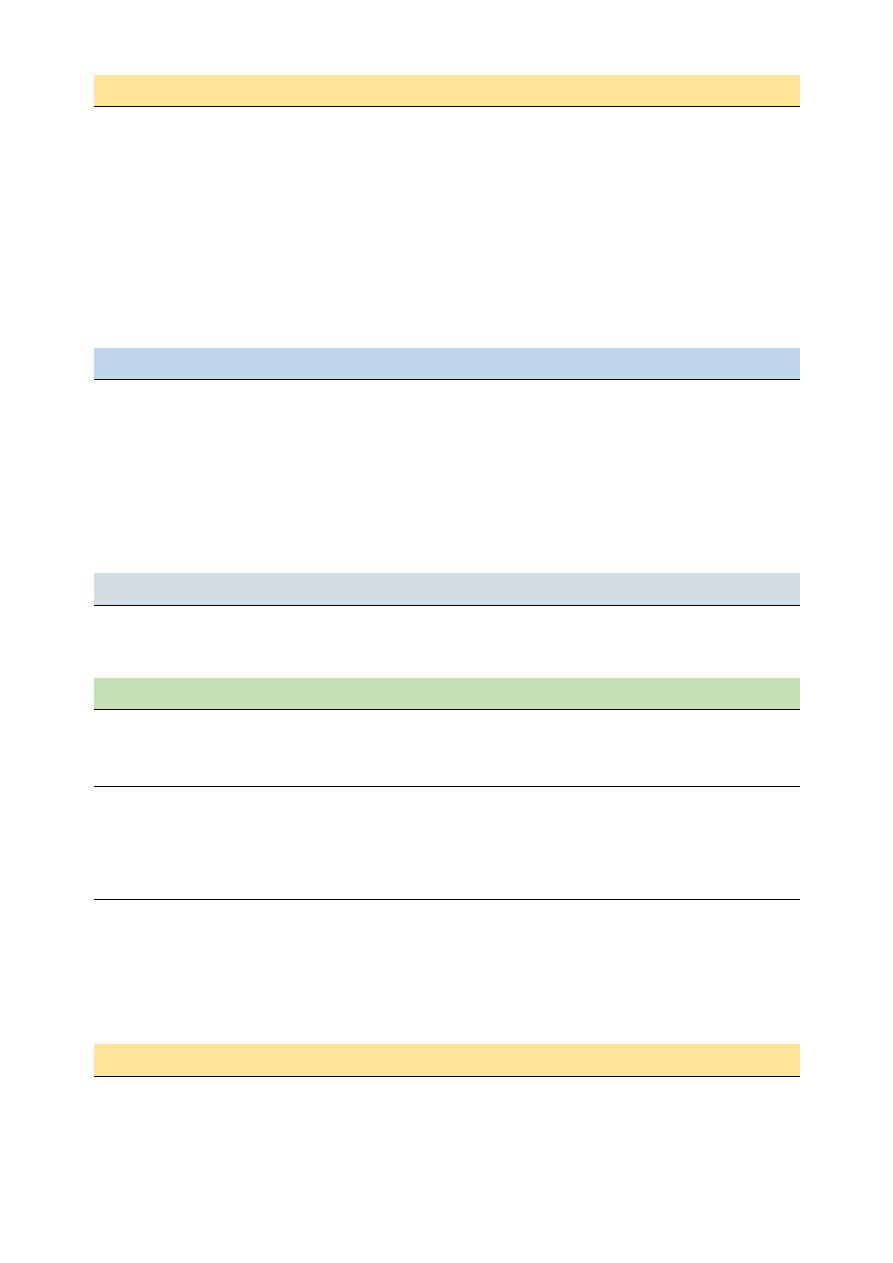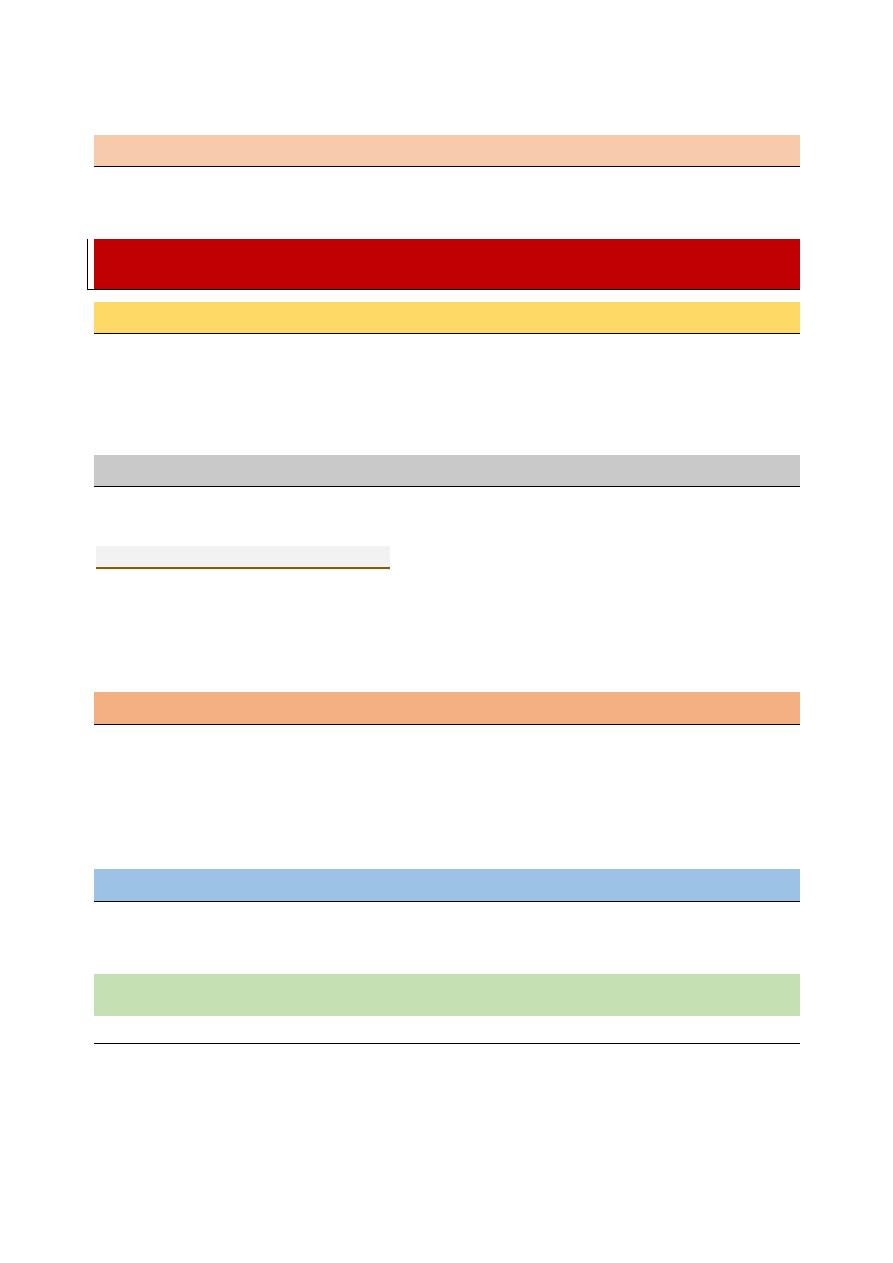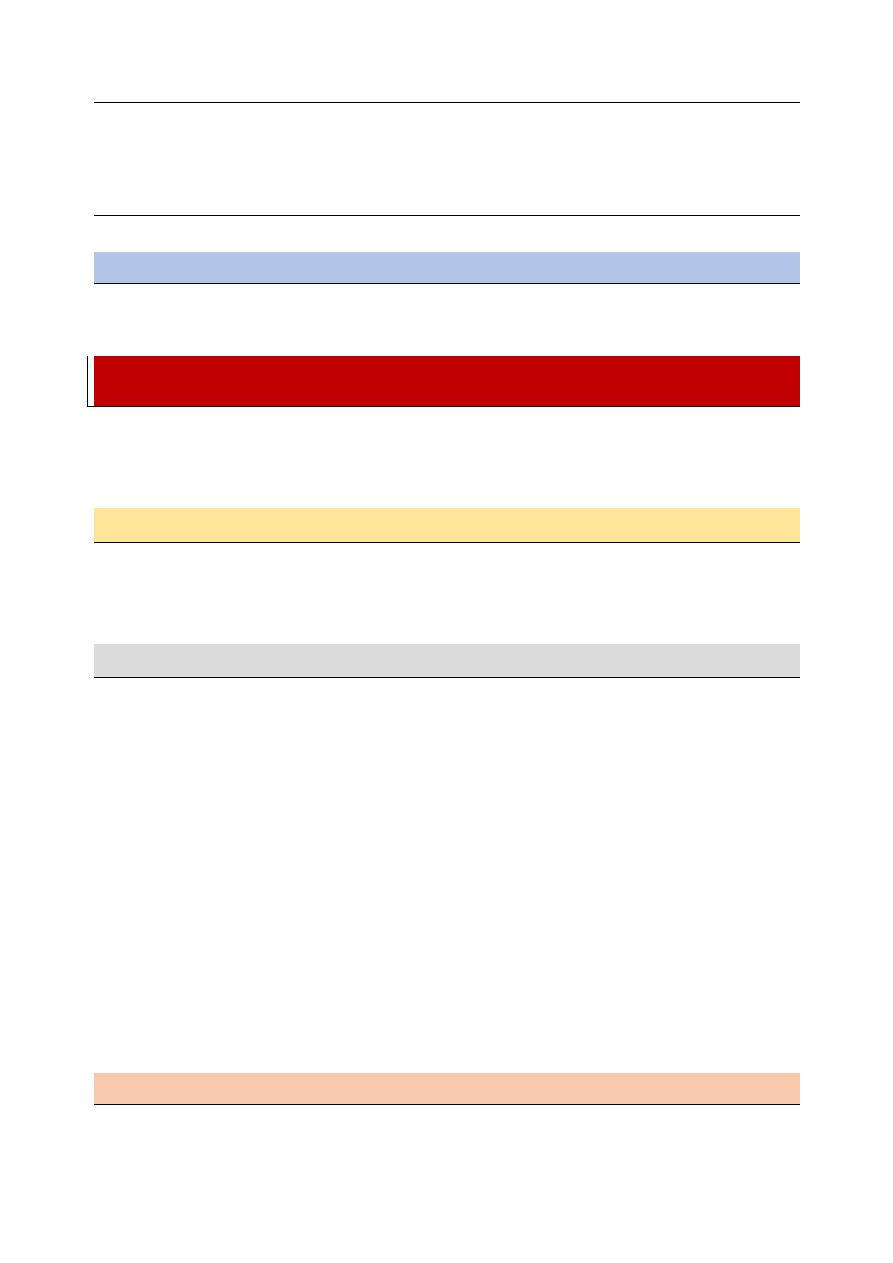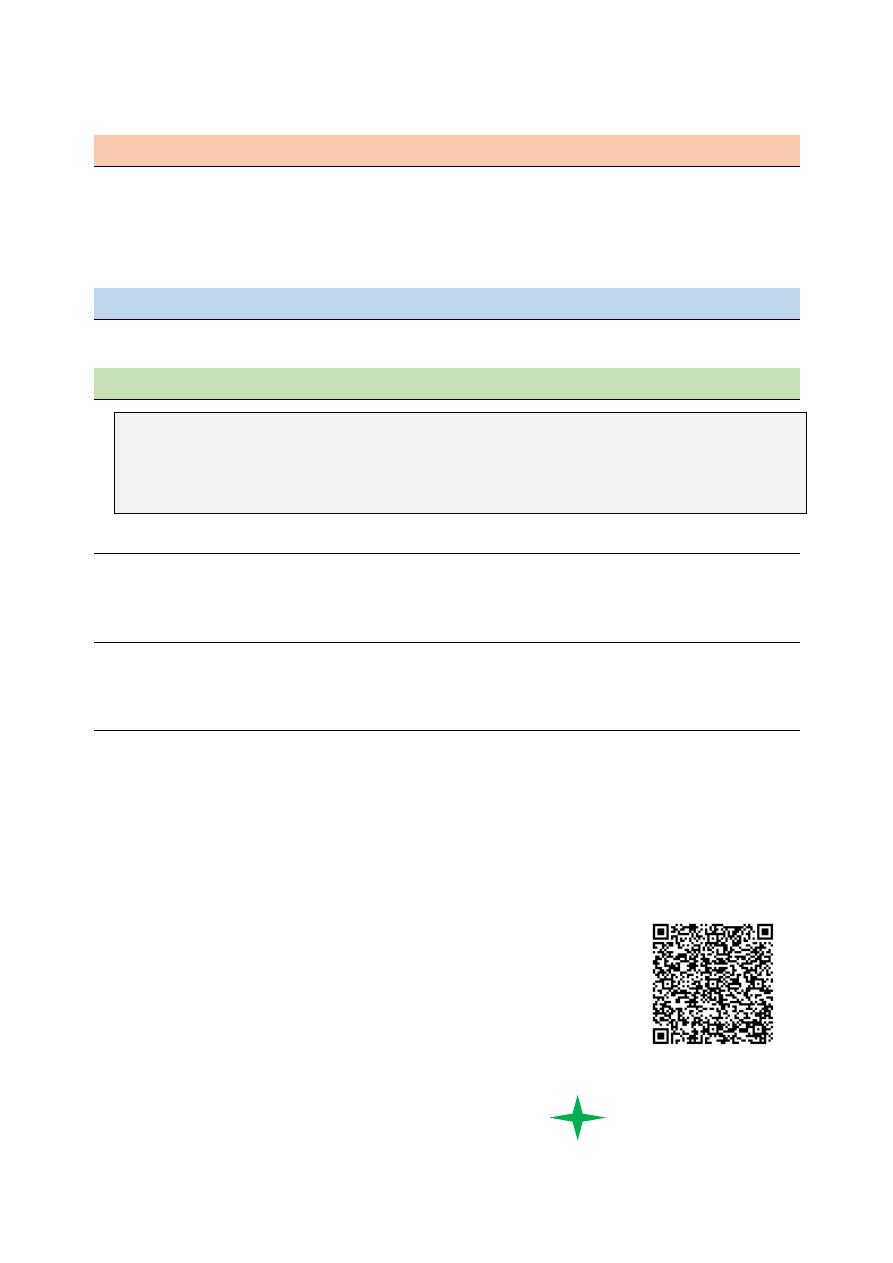
1
Enteric Fever (Typhoid Fever)
D. Tariq
L1
Etiology:
Typhoid fever is caused by salmonella typhi which is gram negative, very similar but often
less severe disease is caused by S. paratyphi A,B, and C.
Epidemiology:
The incidence rate of typhoid fever is > 15/100.000 population in developed countries 100-
1000 case/100.000 in population.
The age specific incidence may be highest in children <2 yr. with higher complication and
hospitalization. S. typhi highly adopted to infection of human only. Mode of transmission
by ingestion of food or water contaminated by S. typhi.
Pathogenesis:
The infectivity dose is
10
5
− 10
9
organism with I.P from 4-14 days depending on
inoculating dose after ingestion of S. typhi invade the body through the gut mucosa in
terminal ileum through M cells.
After passing through intestinal mucosa, the organism enter mesenteric in lymphoid system
and then pass into blood stream causing primary bacteremia which is usually symptomless,
and blood culture is frequently negative at this stage. The blood borne bacteria are
disseminated and colonize the reticulo-endothelial system, bladder, and bone marrow,
where replicate within macrophage.
After period of replication S. typhi shed back into the blood causing secondary bacteremia
which coincide with onset of clinical symptoms.
Clinical Features:
The clinical presentation varies from mild disease to severe with multiple complicated,
depending on many factors like duration of illness, age, pervious exposure or vaccine,
virulence of bacteria, size of inoculum and immunity.
High fever present in 95% of cases which is rise gradually but the stepladder rise only in
25% of cases. Coated tongue 76%, anorexia 70%, vomiting 39%, hepatomegaly 37%,
diarrhea 36%, toxicity 29%, abdominal pain 21%, pallor 20%, splenomegaly 17%,
headache, jaundice, ileus and intestinal perforation. If no complication occur, the
symptoms resolve within 2-4 wks.

2
Complications:
Hepatitis and cholecystis are relatively rare, intestinal hemorrhage >10, perforation 0.5%,
intestinal perforation may preceded by abdominal pain, tenderness, vomiting and features
of peritonitis. Rare complication toxic myocarditis, which manifested by arrhythmia, heart
block or cardiogenic shock.
Neurological complication are also rare included delirium, psychosis, Increased ICP,
cerebellar ataxia, chorea and Guillain-Barre syndrome.
Other complication including necrosis, DIC, nephrotic syndrome, HUS, parotitis, orchitis
and suppuration lymphadenitis.
Diagnosis:
The main stay of diagnosis of typhoid fever is positive culture from blood, urine, stool or
B.M result at blood culture is 40%-60% in early course of disease.
Other lab. test is non-specific WBC low in relation to fever and toxicity, thrombocytopenia
accompany DIC, the classical Widal test is lack sensitivity and specificity.
Monoclonal antibody for S. typhi specific antigen in serum or urine. PCR using H1-d
primers.
Differential diagnosis
AGE, Bronchitis, Bronchopneumonia, Malaria, Sepsis, TB. Brucellosis, Dengue fever,
acute hepatitis and IMN.
Treatment
Adequate rest, hydration, correct fluid and electrolyte imbalance, and antipyretic therapy.
Uncomplicated typhoid fever
Fully sensitive chloramphenicol 50-75 mg/kg/day.
Multi-drug resistant fluoroquinolone 15 mg/kg/day, or cefixime 15 mg/kg/day.
Quinolone resistant azithromycin 8-10 mg/kg/day or ceftriaxone 75 mg/kg/day.
Sever typhoid fever
Fully sensitive ampicillin 100 mg/kg/day, or ceftriaxone 75 mg/kg/day.
Multi-drug resistant fluoroquinolone 15 mg/kg/day.
Quinolone resistant ceftriaxone 75 mg/kg/day.
Dexamethasone 1 mg/kg/day for 48hr. has been recommended for severely ill patient with
shock or coma.
Prognosis
The prognosis depend on rapidity to diagnosis, appropriate antibiotic therapy, age of
patient, salmonella serotype, and appearance of complication.

3
Despite proper therapy 2-49 may relapse in individual with excrete S. typhi>3 month after
infection are regarded chronic carrier.
Prevention
Chlorination of water, avoid consumption street food especially Ice cream, screening of
food handlers, and revaccination with oral life attenuated vaccine.
Brucellosis:
Etiology:
Brucellosis is caused by small, aerobic, non-spore forming. Non-motile, Gram-negative
bacteria. Human are accidental host and acquired this disease from direct contact with
infected animals. There are 4 types are B.abortus (cattle), B. melitensis (goat, sheep), B.
suis (swine), and B. canis (dog). Are responsible for human disease.
Clinical manifestation:
Brucellosis is systemic disease that very difficult to diagnosis in children without history
of animal or food exposure. Symptoms are acute or insidious after 2-4 wks. and include
triad of fever, HSM, and arthralgia
.
Can be demonstrated in most of patient, some present with PUO, abdominal pain,
headache, diarrhea, rash, night sweeting, and weakness. The common joints involve are
knee, ankle, hip, and sacroiliac joint. Neonatal and congenital brucellosis have been
described through breast milk or trans-placental.
Diagnosis:
CBC may show pancytopenia which may helpful. Definitive diagnosis by isolation of
Brucella from blood, bone marrow, or other tissue culture. Blood culture mar required 4
wks. Serum agglutination test (SAT) is most widely used to detect AB, false positive occur
with Yersinia, francisella, and vibrio cholera. Other tests are enzyme immune assay, and
PCR.
Differential diagnosis:
Include tularemia, cat scratch disease, typhoid fever, histoplasmosis, mycobacterium,
atypical mycobacteria, rickets disease and Yersinia.
Treatment:
For patient > 8 yr.
Doxycycline 2-4 mg/kg/day for 4-6 wk.
Plus Rifampicin 15-20 mg/kg/day for 4-6 wk.
Alternative Doxycycline + Streptomycin 20-30 mg/kg/day I.M for 1-2 wk.

4
For patient < 8 yr.
Trimethoprim Sulfamethoxazole
10 mg/kg/day 480 mg/kg/day for 4-6 wk.
Plus Rifampicin 15-20 mg/kg/day for 4-6 wk.
For meningitis, osteomyelitis
Doxycycline + gentamycin + rifampicin for 4-6 wk.
Prevention:
Depend on eradication from infected cattle, goat, and swine. Pasteurization of milk and
dairy product.
Leishmaniosis:
This disease caused by intracellular protozoan parasite, which are transmitted by
phlebotomies sandflies. Multiple species of Leishmaniosis are known to cause human
disease through the skin, mucosal surfaces, and visceral R.E organs.
Etiology:
The leishmania organism are member of trypanosoma-tidae. The parasite is dimorphic;
exist as flagellate promastigote in the insect victim and aflagellate amastigote in
macrophage of vertebrate host.
Visceral Leishmaniosis (VL) Kala azar:
Typically, affect children < 5 years, after inoculation of the parasite into the skin, the child
may have completely asymptomatic infection, or oligo-symptomatic that either resolve
spontaneously or progress into active disease.
Asymptomatic infections are seroparasite with no symptoms of the disease.
Oligosymptomatic children have malaise, diarrhea, poor activity, intermittent fever, and
enlarge liver. In most of these children the illness resolve without treatment only 1/4 with
evolve to active kala azar where the child have intermittent fever, weakness, marked HSM,
and severe cachexia.
At terminal stage the HSM are massive and gross wafting, pancytopenia, jaundice, edema,
and ascites. Anemia may severe lead to heart failure. Death occur in > 90% of patient
without treatment.
Prevention by avoid exposure to sandflies by use insect repellent and net, control or
elimination of infected reservoir, vaccination have efficacy to control disease.
Lab finding:
Include anemia Hb (5-8 g/dL), thrombocytopenia, leukopenia, elevated hepatic
transaminase, and hyperglobulinemia mostly IgG.

5
Differential diagnosis:
Include malaria, typhoid fever,
miliary TB, schistosomiasis, brucellosis, amebic liver
abscess, IM, lymphoma, leukemia.
Diagnosis:
Enzyme immune assay, indirect fluorescence assay, and direct agglutination test, is very
useful to detection anti-leishmanial AB, ELISA by using recombinant antigen (K3q) have
sensitivity and specificity in 100% definitive diagnosis by finding amastigote in smear or
culture from spleen, bone marrow, or lymph node.
Treatment:
The pentavalent antimony compound (Sodium stibogluconate and meglumine) are the
mainstay of treatment of Leishmaniosis 20 mg/kg/day IM or IV for 28 days. Repeated
course may be noted for severe disease.
Side effect of these drugs include fatigue, abdominal pain, discomfort, and liver and cardiac
toxicity.
Amphotericin B desoxycholate in dose 0.5-1 mg/kg/daily or every other day for 14-20 dose
have cure rate 100% liposomal amphotericin 0.3-3 mg/kg/day have no nephrotoxicity.
Paromomycin have efficiency 95%. Oral miltefosine have cure rate 95% on dose 50-100
mg/kg/day for 28 days.
Tuberculosis:
Etiology:
Is caused by mycobacteria tuberculosis, which is non-spore forming bacteria, non-motile,
pleomorphic, weak gram positive cured rods 2-4 nm long. There are obligate aerobic
bacteria.
Transmission:
From person to person by airborne droplet, rarely occur by direct contact with infected
discharge or contaminated fomite. Transmission increase when the patient have positive
AFB smear, extensive upper lobe infection or cortication, copious thin sputum and force
falcon. Young children rarely infected other children or adult because lack of tussive
(
( force required suspending infection particles of correct size.
Pathogenesis:
The primary complex (Ghon complex) include local infection art portal of entry and
regional L.N. The lung is portal of entry in >98% the bacilli multiply initially within alveoli
and some carry to macrophage to regional L.N. The parenchymal lesion of primary
complex heal completely, but regional L.N heal less complete and bacilli liable for decades.

6
During development of the primary complex, bacteria carry to most the body, brain,
kidney, and bones.
Clinical manifestation:
Majority of children with T.B have no sign or symptoms. Occasionally have low grade
fever, and mild cough, and rarely high-grade fever, cough, malaise, and flulike illness. 15%
of adult T.B case are extra pulmonary and 25-30% of children have extra pulmonary
presumptive.
Diagnosis:
CXR, TST, AFB, Culture.
Treatment:
1- Ethambutol 15-25 mg/kg/day
2- INH 10-15 15-25 mg/kg/day
3- Pyrazinamide 20-40 mg/kg/day
4- Rifampicin 10-20 mg/kg/day
Latent T.B (true TST with no S/S)
Isoniazid susceptible 9 month of INH once/day.
Isoniazid resistant 6 month of Rifampicin once/day.
Pulmonary and extra pulmonary, except meningitis
Two month of INH, Rifampicin, and pyrazinamide followed by 4 month of INH, and
Rifampicin for M. tuberculosis and 9-12 moth for M. Bovis.
Meningitis:
Two month of Rifampicin, INH, pyrazinamide, and aminoglycoside followed by 7-10
month of INH ad Rifampicin for M. tuberculosis and 9-12 moth for M. Bovis.
Written By: Mubark A. Wilkins



